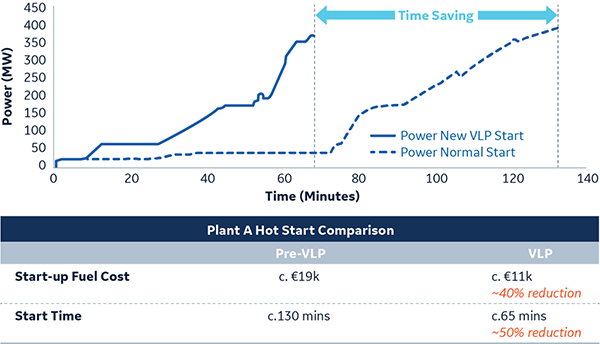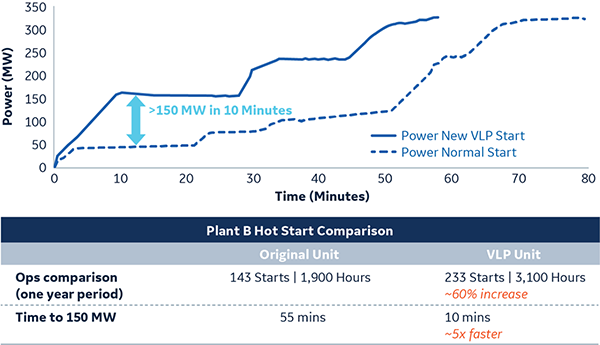Today’s challenge for operators
Keeping your plant competitive
In terms of cost, time to dispatch, and load profile, conventional combined-cycle plant starts are becoming too slow and costly to remain competitive in comparison to real-time power industries. How can combined-cycle plants generate more power sooner and more efficiently—without damaging the HRSG and steam turbine?
How can OpFlex Variable Load Path help?
VLP can help you unlock the full capability of your combined-cycle plant, enabling combined cycle plant start time and fuel savings of more than 40% and 50% respectively.

Conventional operating “path”
Current operation
- GT load and exhaust temperature are coupled, and operation is controlled by a single parameter along a single “path”
- During ST temperature match, load is a function of exhaust temperature
- During normal operation, exhaust temperature is a function of load

With VLP operation
VLP-Enabled Operation
- AutoTune utilized to manage combustor operability across full turbine operating envelope, min to max IGV, all loads, and all DLN modes
- Fully independent control of exhaust temperature and load
- Plant dictates exhaust conditions—not the gas turbine



A closer look
VLP control interface
1. Control selections
- VLP enable/disable
- Setpoint priority
- Local or remote DCS control
2. Setpoint control
- Load setpoint and rate
- Exhaust temperature setpoint and rate
3. Boundary control
- Emissions
- Exhaust flow
4. Operating space chart




